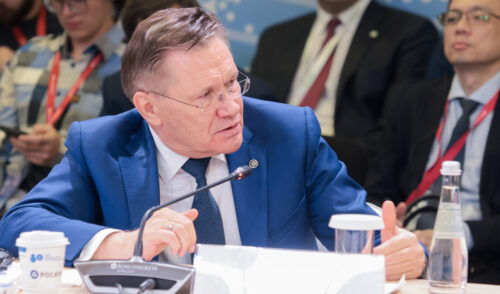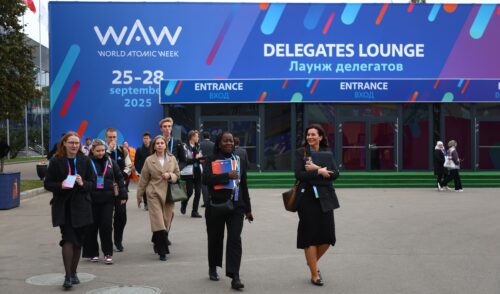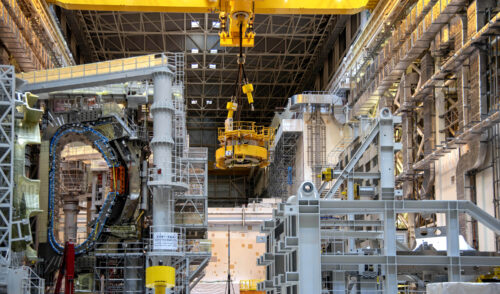
At the Forefront of ITER Project
back to contentsRosatom’s CEO Alexei Likhachev has visited a site in Cadarache (France) where the International Thermonuclear Experimental Reactor (ITER) constructed by an international team has approached the full-scale implementation phase. With the construction progressing visibly, procurement activities are also going full tilt. Russia produces key reactor components and other hi-tech equipment for ITER. Superconductors, gyrotrons, safety system components and diagnostic devices – a total of 25 systems – are the responsibility of Russian companies. Along with sharing its unique solutions, Rosatom receives access to the latest technologies of its international partners.
“Taming the energy of thermonuclear fusion will open up vast scientific and technological prospects for mankind. That is why Russia, which has an unparalleled expertise in nuclear and thermonuclear research, cannot afford to miss a chance of working at the forefront of the ITER project and makes a sizable contribution to its implementation. It is also worthy of note that the tokamak –the initial concept of this international project – was developed in our country,” Rosatom’s CEO said during his visit.
According to him, the ITER project is an exciting opportunity for Russian machinery manufacturers. “First of all, it generates new orders for Rosatom’s manufacturing subsidiaries and contributes to the creation of new products and acquisition of new competencies. Second, results obtained from the project improve Russia’s nuclear research potential. ITER is important for us as a ground where we can test energy solutions of the future and as an opportunity to strengthen Russia’s role on the global technology market,” said Alexei Likhachev.
After his meeting with Alexei Likhachev, ITER Organization Director-General Bernard Bigot said that Russia had always been an exemplary partner that always meets all of its obligations on time. “Russia’s participation in the ITER project is a perfect chance to look beyond today’s technological horizon and lay a foundation for national projects in the thermonuclear fusion research,” he said.
Equipment shipped on time
In early September, the largest shipment of electrical equipment was sent off to the project site. High-current busbar components for the power supply systems of ITER’s superconducting magnet were delivered on six trucks to the seaport of St. Petersburg for transshipment and transportation to the construction site. The first two shipments of busbar components for the ITER project were sent off from St. Petersburg in 2015 and 2016. Produced by Rosatom’s Efremov Research Institute (St. Petersburg), these busbars are the most expensive and complex out of the 25 systems supplied by Russia. Anatoly Krasilnikov, Director of the ITER Project Center in Russia, said that this largest ever shipment of Russian-produced components was made on time and proved the commitment of Russian companies involved in the ITER project to their obligations. “We have demonstrated once again that Russia is a reliable partner to the world’s largest R&D project,” he said.
FOR REFERENCE:
The ITER (International Thermonuclear Experimental Reactor) Agreement was signed in 2006. Around 45% of the project is financed by the European countries, with Russia contributing approximately 9% of the total budget by supplying hi-tech equipment. The ITER construction site is located near the Cadarache Research Center in Southern France. This is the first large-scale attempt to demonstrate the potential of thermonuclear fusion in commercial power production. If the ITER project is a success, the mankind will have an almost limitless source of power. The project involves a total of 35 countries, including 29 EU member states, China, India, Japan, Russia, South Korea and the USA. The launch of the reactor and obtaining the first plasma are expected in 2025.




